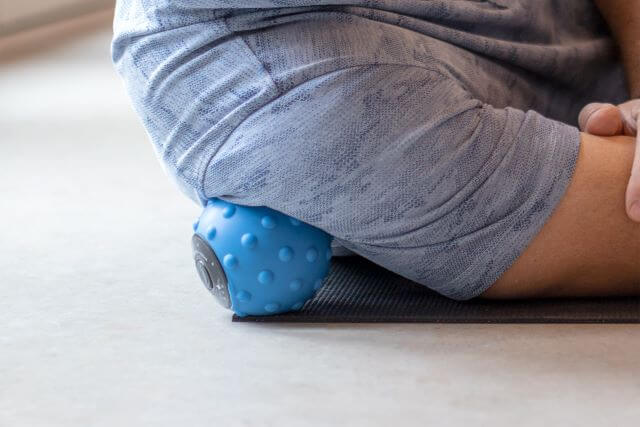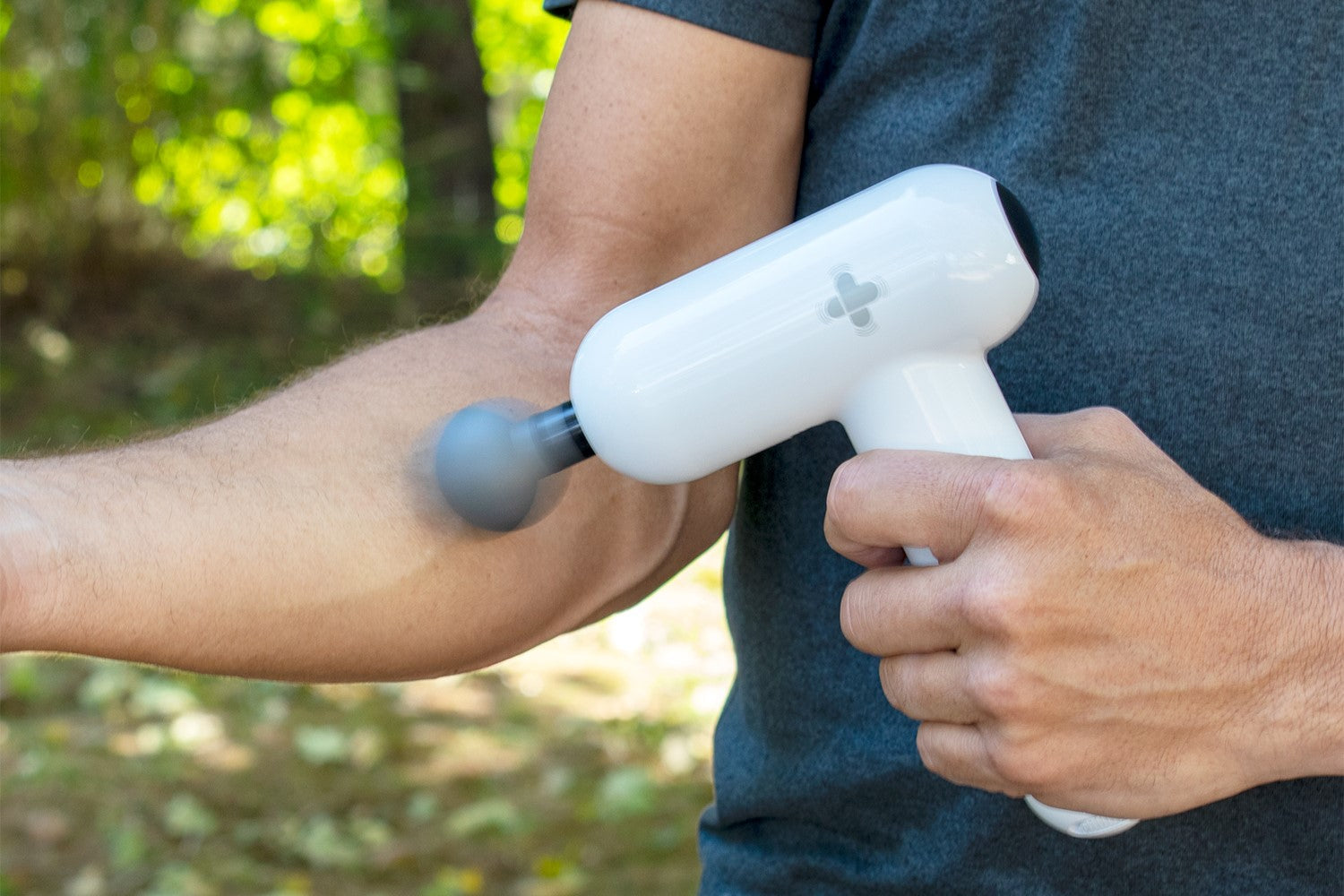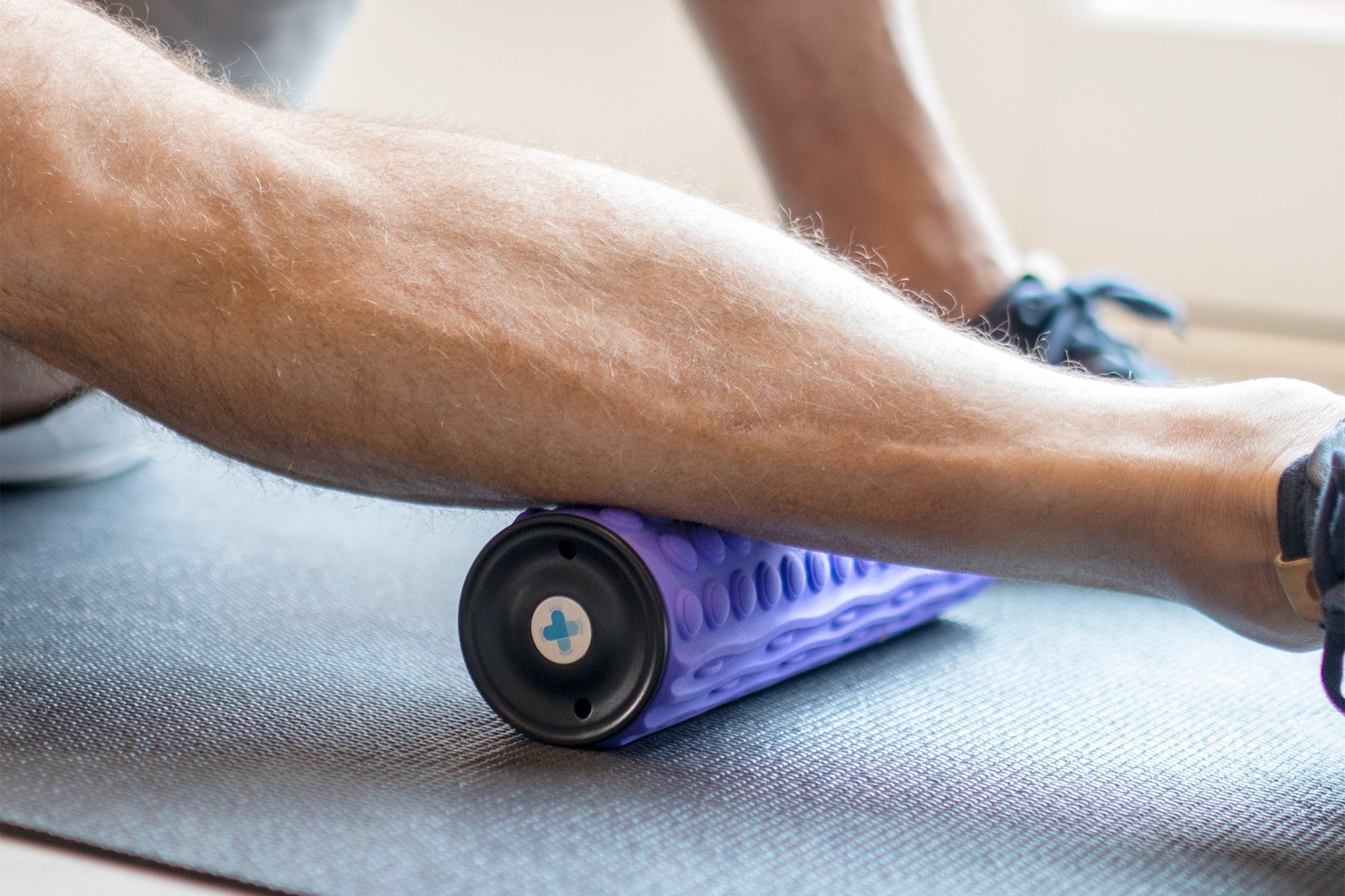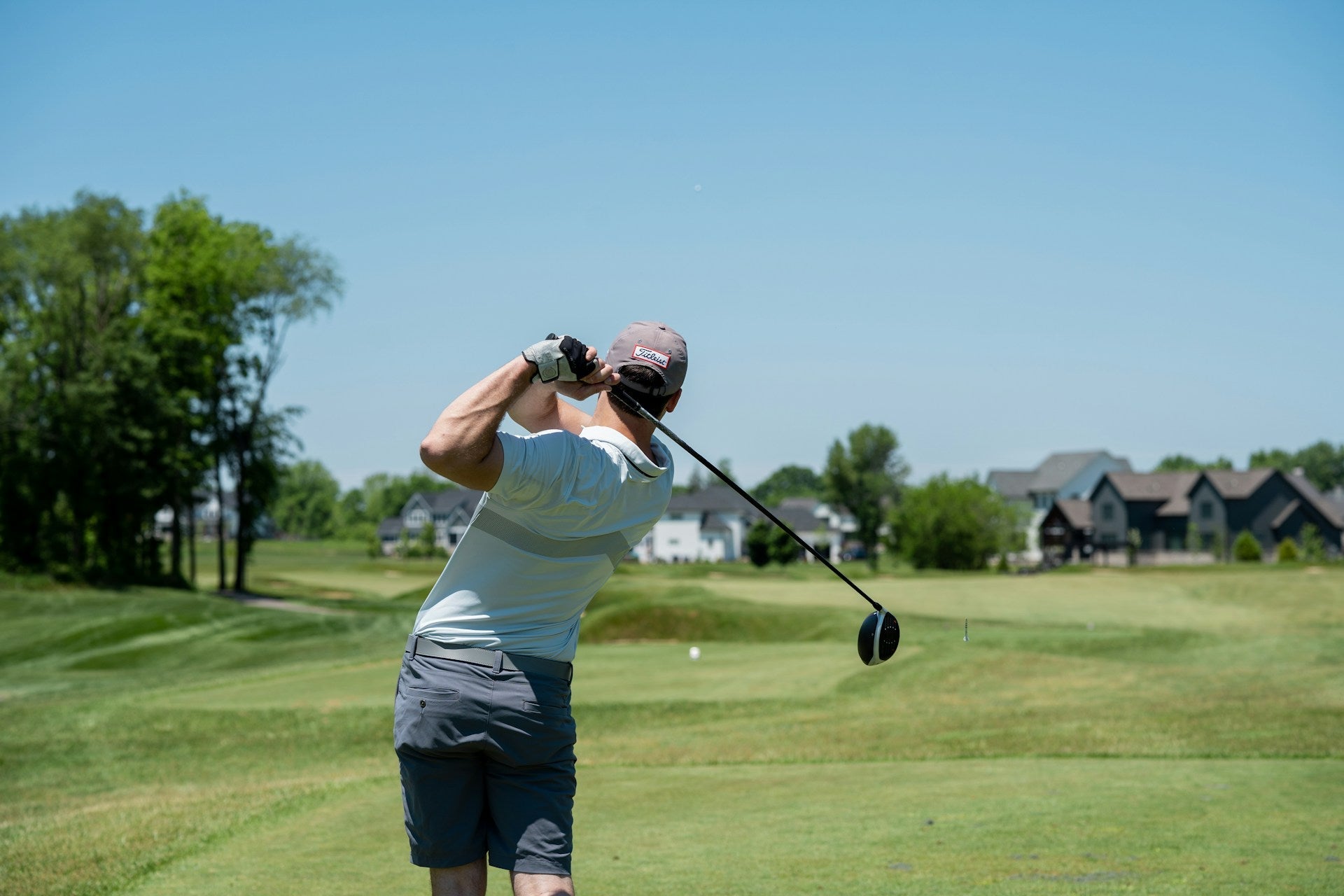If you’ve ever left the tennis court wincing from post-match arm pain, you’re certainly not alone. Up to 50% of tennis players will face symptoms of tennis elbow at some point — and that’s not the only ailment that can come with this intense sport.
But here’s some good news: Massage can relieve pain and help you move better, both on and off the court.
Keep reading to learn about massage for tennis players, including the benefits, best techniques, and tips for getting started.
Common Tennis Aches and Pains
If you’ve been playing tennis for a while, you’re probably no stranger to the aches and pains it can bring. But when it comes to your arms and shoulders specifically, tennis can lead to:
Rotator Cuff and Shoulder Pain
Your rotator cuff is made up of several muscles and tendons that move your shoulder. As a tennis player, it’s what helps you lift, raise, and rotate your arms in every match.
When you don’t give your rotator cuff enough rest (or you hit the tennis ball with a little too much force), it can suffer from wear and tear. Over time, this can lead to pain and stiffness, especially when reaching above your head.
Tennis Elbow
Tennis elbow (also called lateral epicondylitis) is one of the most notorious injuries in tennis.
While it doesn’t always have an exact cause, it usually stems from overuse of the tendons near the elbow on the outer forearm.
Benefits of Massage for Tennis Players
So, what can massage therapy do for you as a tennis player? Whether you’re coping with tennis elbow or simply looking to boost your recovery, you can use massage to:
Improve Shoulder Mobility
A good massage doesn’t just knead away tension — it can also help improve your shoulder mobility. In fact, a 2017 meta-analysis found that massage helped shoulder flexion (rotating straight out and above your head) and abduction (lifting your arm up and out to the side).
To put it another way? Adding massage to your routine could mean better flexibility and smoother overhead motions on the court.
Relieve Post-Injury Arm Pain
In many cases, a gentle massage can help soothe mild post-injury pain. And even when you have a more serious injury — like a strain — you can talk to your doctor about trying massage later in the healing process.
In addition, research has shown that deep friction massage could be helpful for those with tennis elbow. This technique involves applying pressure across your muscle fibers to break up scar tissue and tightness.
It’s important to note that you should stick to rest and ice in the initial few days after an injury. With the help of a professional, you can learn which massage techniques can best support your recovery (and when it’s safe to start.)
Alleviate DOMS
As an avid tennis player, you’re probably no stranger to delayed onset muscle soreness (DOMS). Luckily, massage can help relieve DOMS after intense exercise — and you don’t need to visit a masseuse to try it for yourself.
Instead, you can use athletic tools like massage guns and foam rollers to soothe your arm muscles whenever it fits in your schedule. Just a few minutes per day could be enough to help you ease pain and feel more refreshed on the court.
Support Your Muscles Pre- and Post-Match
If you play tennis at a high level, you may have heard of pre- and post-event massage. But is it really worth trying?
For many players, yes. A quick 15-minute massage before a tournament can help get your arms and shoulders warmed up and ready for action. And in the days following an event, a relaxation massage can go a long way in easing stiffness, soothing pain, and supporting your muscles as a whole.
Improve Rest and Recovery
As an athlete, you probably know just how vital sleep is for recovery.
While you sleep, your body repairs the muscles, tendons, and joints that were strained in the day’s training sessions. In turn, it can help you avoid overworking your arms, and may even reduce your risk of injury.
Luckily, studies suggest that massage can help you get a good night’s sleep. This is because it helps your body shift into “rest-and-digest” mode — by releasing endorphins, calming your breath, and slowing your heart rate before bed.
6 Tennis Massage Techniques for Elbow & Arm Pain

Here are six tennis player-friendly massage techniques that you can try at home — including ways to do it with a foam roller, massage gun, or using your own hands.
1. Shoulder Foam Roll
A basic shoulder foam roll has a place in almost every athlete’s recovery routine.
This exercise helps knead away tension in some of the busiest muscles in tennis: the rotator cuff and upper back muscles. In other words, it’s one of the best ways to fend off pain from repetitive overhead motions.
Here’s how to try it:
- Start by lying down sideways, and place the roller under your armpit.
- Bend the arm that’s resting on your foam roller, and place your hand behind your head for support.
- Use your leg strength to lift your hips off the ground.
- Begin to roll your latissimus dorsi (more casually known as the lat muscle) for 20-30 seconds.
- Lower your hips to the ground. Then, extend your lower arm and face your palm upward.
- With gentle pressure, slowly rotate your body forward and backward to massage the shoulder muscles.
- If you notice a tense area, pause and hold the pressure for a few extra seconds.
- Roll for a total of one minute.
2. Forearm Self-Massage
Along with your shoulders, your forearms work incredibly hard in every tennis match, making them a hotspot for conditions like tennis elbow. Fortunately, a quick hands-on massage can bring your muscles some relief.
Simply follow these steps to give it a try:
- Have a seat near a desk or coffee table. Rest your forearm on the surface with your palm facing up.
- Use your opposite hand to warm up the muscles with light, squeezing motions. Start at just below the elbow, and make your way down to the wrist.
- Then, begin to glide your knuckles along the forearm, starting at your wrist and moving towards your elbow for 30 seconds.
- Flip your arm over and use your knuckles to glide over the top of the forearm for 30 seconds more.
- Optional: To do some deeper work, you can use two fingers to apply gentle side-to-side friction near the elbow. This is called cross-friction massage, and it can help break up tension caused by swinging your racket.
3. Forearm Foam Roll
This easy forearm foam rolling exercise helps target both your flexors (the muscles on the underside of the forearm) and extensors (the muscles on top of the forearm).
It’s perfect as part of your warm-up or cool-down routine, and takes less than a minute to do. To try it:
- Kneel on the ground, and place your foam roller in front of you.
- Lean forward, and place one forearm on top of the roller with your palm facing down.
- Begin to roll for 20-30 seconds. (Optional: Gently press down on your forearm with your opposite hand to deepen the pressure.)
- Then, flip your palm upward, and repeat for another 20-30 seconds.
- Repeat with your other arm.
4. Knot Relief With a Massage Ball

If you’re a hard-hitter on the tennis court, you might frequently wind up with knots in your upper back and shoulders.
The good news? You can easily massage these pain points with a tennis ball. Simply place the ball between your muscles and the wall (or the ground), and use moderate pressure to roll away the tension.
To get started, here’s how to use a massage ball for posterior cuff (outer shoulder) release:
- Stand sideways next to a wall.
- Hold the ball on the muscles at the back of your upper shoulder.
- Gently lean against the wall to hold the ball in place.
- With moderate pressure, begin to roll your shoulder in circular motions. When you find a trigger point, pause and hold the pressure for 10 seconds.
- Optional: You can repeat these steps on the front of the shoulder for even deeper relief.
5. Forearm Massage with Massage Gun
Massage guns are some of the most user-friendly tools for deep, soothing massage on the go. And when it comes to tennis, they can help with all kinds of sore muscles — including your forearms.
Here’s how to try it:
- Attach the large, round head to your massage gun. (This is the best option for beginners.)
- Set your massage gun to a light-to-moderate speed.
- Rest your arm in your lap with your palm facing up.
- Glide the massage gun along the forearm muscles at an angle. Optionally, you can also spend a few seconds gliding the gun across the muscle fibers.
- Flip and repeat along the top of the forearm.
- Massage for a total of 1-2 minutes.
6. Shoulder Massage with Massage Gun
Whether you need to warm up before a match or curb soreness after training, a quick shoulder massage gun session can help. Simply:
- Using the round ball attachment, set your massage gun to a low setting.
- Reach up to your opposite trapezius muscle, and glide the massage gun over any areas of tension for 20-30 seconds. (Note: Be sure to avoid the neck, as massage guns can be too harsh for this delicate area.)
- Next, glide the massage gun across the deltoid (upper outer shoulder muscle) for 20-30 seconds more.
- To finish, lift up your arm, and gently run the massage gun over your latissimus dorsi for 20-30 seconds.
Best Types of Professional Massage for Tennis Players
Aside from home massage, you might also benefit from the occasional professional massage — especially if you’re training at a high level. The right therapist can help you stay flexible, boost your recovery, and even aid in the prevention of injuries.
But what kind of massage should you try as a tennis player? In short, it depends on your goals and current health concerns. A few popular options include:
- Whole-body Swedish massage: This modality is all about boosting relaxation and circulation. It still relieves tense, painful muscles, but focuses more on all-over relief.
- Deep tissue massage: This technique focuses on the deeper layers of your muscles to treat stiffness and injuries.
- Sports massage: This type of massage is best for athletes wanting to target their pain points head-on. For tennis players, it involves techniques like kneading, rolling, friction, and vibration on your most active muscles.
How Often Should Tennis Players Use Massage?
When it comes to athletic massage, there’s no “correct” number of times to use it per week. You can opt for self-massage once per week, or up to every day if it feels good to you.
That being said, one massage by itself probably won’t bring you any long-term results — so if you really want to reap the benefits, it’s best to work your muscles at least semi-regularly.
Safety Tips To Keep In Mind
For most tennis players, massage is a safe, natural tool that doesn’t come with many side effects. However, there are some times when you may need to adjust your routine or check with your doctor first.
Before you get started, remember to:
- Avoid massaging new injuries. As mentioned earlier, you’ll want to watch out for acute injuries, including strains, wounds, and bruising.
- Talk to your doctor if you have any medical conditions. Certain conditions (like cardiovascular problems, kidney issues, etc.) may not be safe with massage. If you’re unsure about anything, be sure to check with your physician.
- Start light. Begin with gentle pressure, and gradually increase it until you find the level of massage that feels best for you.
- Watch out for painful techniques. Working on a knot can cause some initial discomfort, but it should subside after a few seconds. With that being said, it’s best to avoid any massage techniques that feel aggravating or downright painful.
Other Tips for Arm and Elbow Pain Relief
In the grand scheme of things, massage is just one way to support your arms, elbows, and shoulders for tennis. But if you’re looking for long-term mobility and pain relief, here are some other tips to keep in mind:
1. Warm Up Before You Hit the Court
A solid tennis warm-up routine can help your elbows and shoulders prepare for the demands of an intense training session. But what kind of exercises should you do — and for how long?
In short, a 10-minute warm-up full of dynamic (or active) stretches is all you need to boost your blood flow and loosen up your muscles. Some useful exercises include:
- Jogging with arm circles
- Jumping jacks
- Wrist circles
- Arm crosses
2. Consider Kinesiology Tape (KT) or An Arm Brace
If you have elbow or shoulder pain, it may be time to consider investing in kinesiology tape (KT) or a brace. These simple tools can add some structure and support around your joints, all while ensuring that your arm stays in better alignment as you heal.
3. Use the RICE Method for Acute Injuries
When you’re dealing with a fresh strain, tear, or case of tendonitis, the RICE method is going to be your go-to starting point for recovery. Depending on the severity of your injury, your doctor may recommend this protocol for up to a few days.
RICE stands for:
- Rest: Take a break from tennis and any activities that strain the injury.
- Ice: Apply a cold pack to soothe the area a few times per day.
- Compression: Compressing the area with an elastic bandage or brace can help decrease swelling.
- Elevate: If applicable, keeping the injury above the heart can also help limit swelling.
The Takeaway on Massage for Tennis Players
If you spend a lot of time on the tennis court, you’ve probably had your fair share of elbow and shoulder pain. Thankfully, tools like foam rollers, massage guns, or even a simple tennis ball can break up tension in the areas that work the hardest while you train.
You can start light, with just a few minutes of foam rolling throughout the week. But to take your recovery routine to the next level, it can help to keep a more advanced tool — like a massage gun — on hand.
The Accuvibe Micro is one mini, power-packed option built for deep relief on the go. Pick it up here, or explore the full range of MedMassager recovery tools today.



